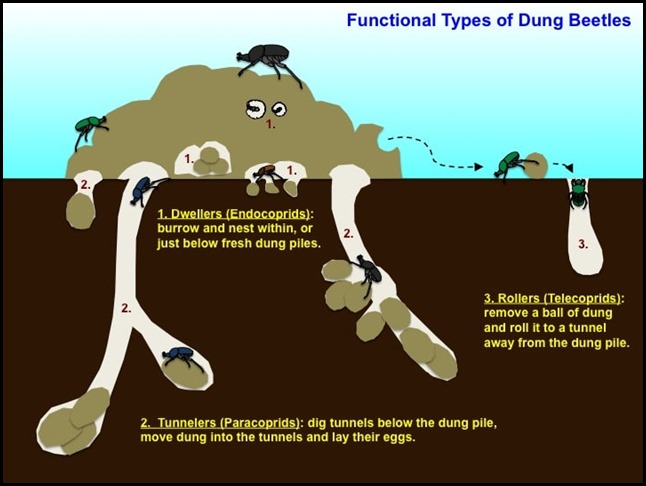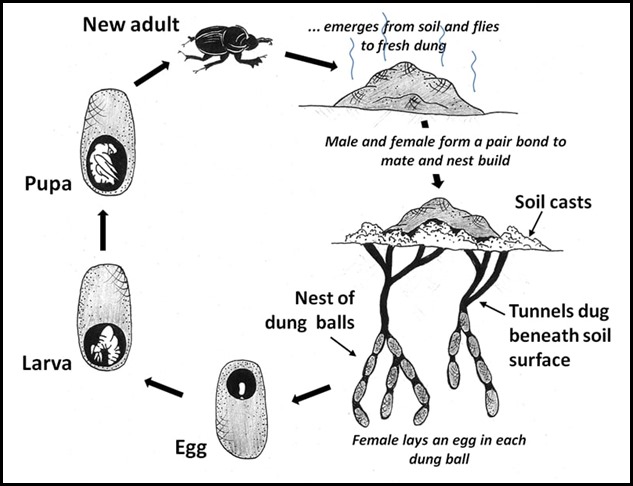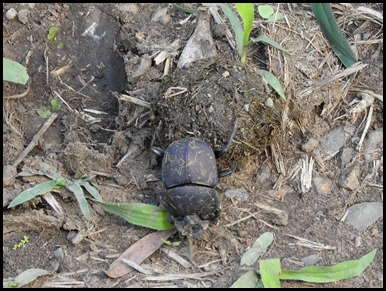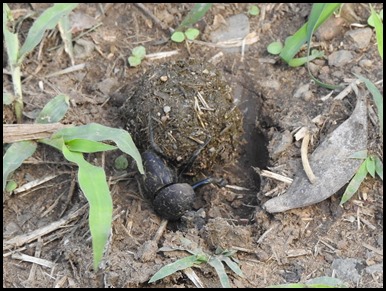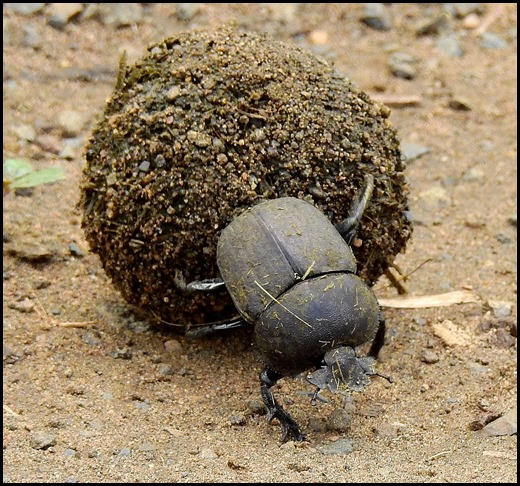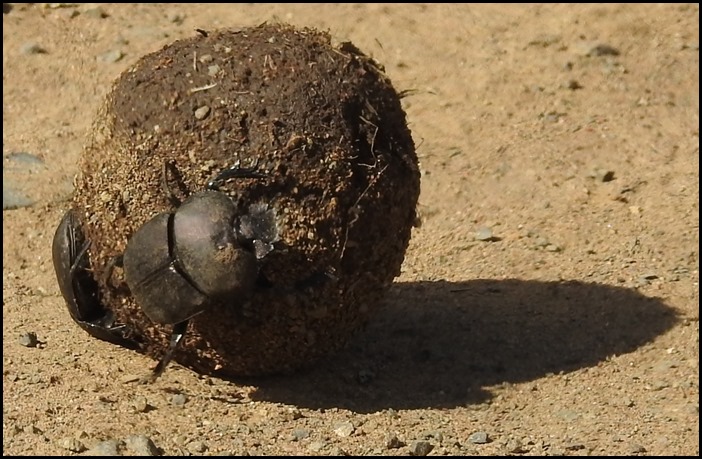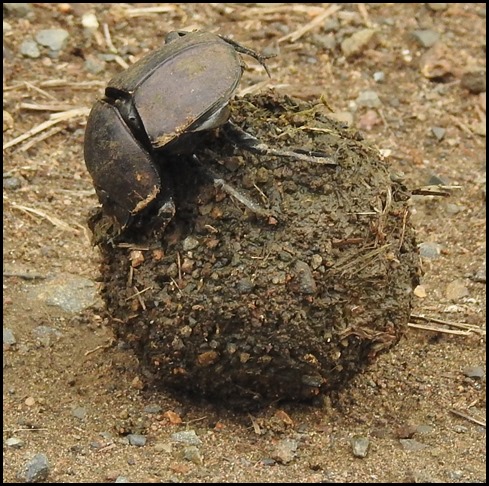Dung Beetle Fun

|
Dung Beetle
Fun
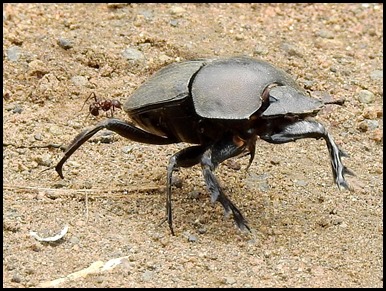 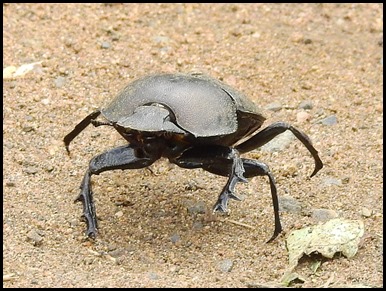 We were of course on high look-out for the
Big 5 but looking down gave us some of the best entertainment during our two
days exploring Hluhluwe–iMfolozi Game Park. These two
chaps were scuttling at greyhound speed toward a newly deposited pile
left by a rhino (not a small pile would be a creditable
guess....).
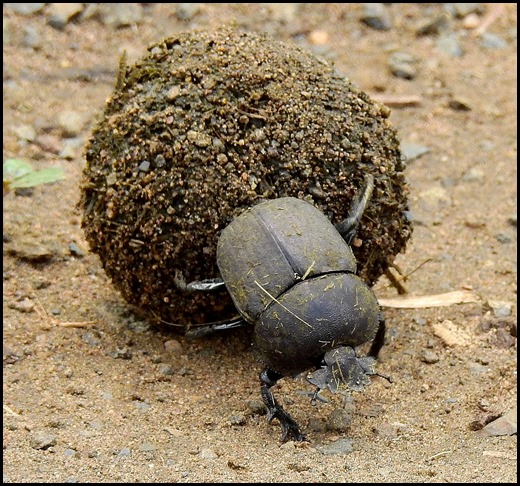 The Scarabaeidae are a super-family of tens of thousands of beetles, including the sub-grouping Scarabaeinae, the dung beetle, which on its own has more than 5,000 species. Dung Beetles are found on practically every continent, and will thrive in all climates except where there is extreme cold so no species are found in Antarctica.
Rollers (our favourites), burrowers or dwellers: (picture courtesy of the Hluhluwe–iMfolozi Game Park). Dung beetles can be broken down into four distinct groups, telecoprid, endocoprid, paracoprid and kleptocoprid. The endocoprids lay their eggs in a pile of dung, paracoprids dig down below a pile of dung, telecoprids roll the famous balls of dung and kleptocoprids steal the balls from the telecoprids. Dung beetles’ range in size from a tiny 5mm, to a very substantial 50mm and are divided into groups according to how they dispose of the dung. They are either “rollers”, rolling the dung into balls and then burying the balls in soft soil; or “burrowers”, taking the dung into tunnels directly under the main heap; or “dwellers” which actually live in the dung. There are often many varied species of dung beetles in a single pile of manure. They are very diverse in appearance, with carapaces varying in colour from black to blue to copper. The ancient Egyptian scarabs are actually images of dung beetles. The beetles have a lifespan of approximately three years. Their eggs, which are laid in the dung, hatch into larvae which eat the solid matter surrounding them. The adults generally only drink the liquid nutrient which is present in the dung.
The lifecycle of our chaps. (Courtesy of the H+I Park).
Telecorprid beetles will roll their ball of dung until they find a suitable place, they then dig a hole and submerge it, they then repeat the pattern, find more dung, roll a ball and place that on top of the other dung ball. Often, they make and bury as many as three balls before closing the hole with their larvae in the first ball. Amazing, the last ball will always “hatch” first followed by the second and then the deepest one, all to prevent a traffic jam on the way out. Beetles have a lifespan of approximately three years. Their eggs hatch and will feed on the solid material surrounding them whilst adults supplement food with a drink (liquid excretions from faeces).
Most dung beetles search for dung using their acute sense of smell. Some smaller species simply attach themselves to the dung-providers to wait for the dung. After choosing their fresh dung, a dung beetle begins to roll it, following a straight line despite all obstacles. This gave us so much fun to watch the determined chap who took on quite a hillock. Up he went, down he rolled and back he went.
Nothing for it but to pick himself up and start again.
No resting on laurels as highway robbers are always about trying to steal another’s loot, so the dung beetles have to move at speed away from the often-steaming pile of treasure. These little chaps do so much work for soil fertilisation and composting.
Dung beetles can roll up to 10 times their weight. Male Onthophagus taurus beetles can pull 1,141 times their own body weight: the equivalent of an average person pulling six double-decker buses full of people. We saw several balls where the ‘wife’ was taking a free ride, not helping with the relocation of the ball but probably directing like any true ‘Admiral’......... The African Scarabaeus zambesianus) navigates by polarisation patterns in the moonlight, the first animal known to do so. The nocturnal African dung beetle (Scarabaeus satyrus) is the only known non-vertebrate animal to navigate and orient itself using the Milky Way.
Rollers can bury dung two hundred and fifty times heavier than themselves in one night. All too much for this chap who was absolutely soundo. I know how he feels. Poor, poor Bear........
ALL IN ALL A REAL FAVOURITE FANTASTIC CHAPS |
